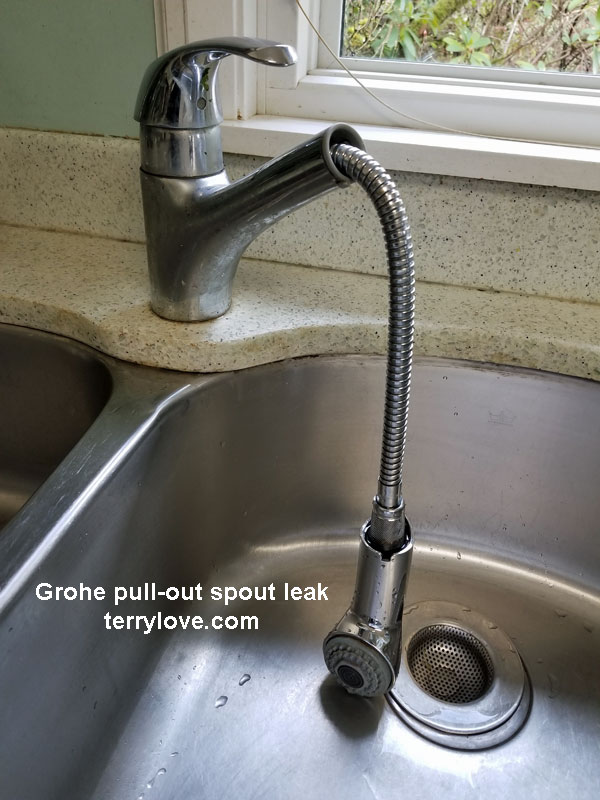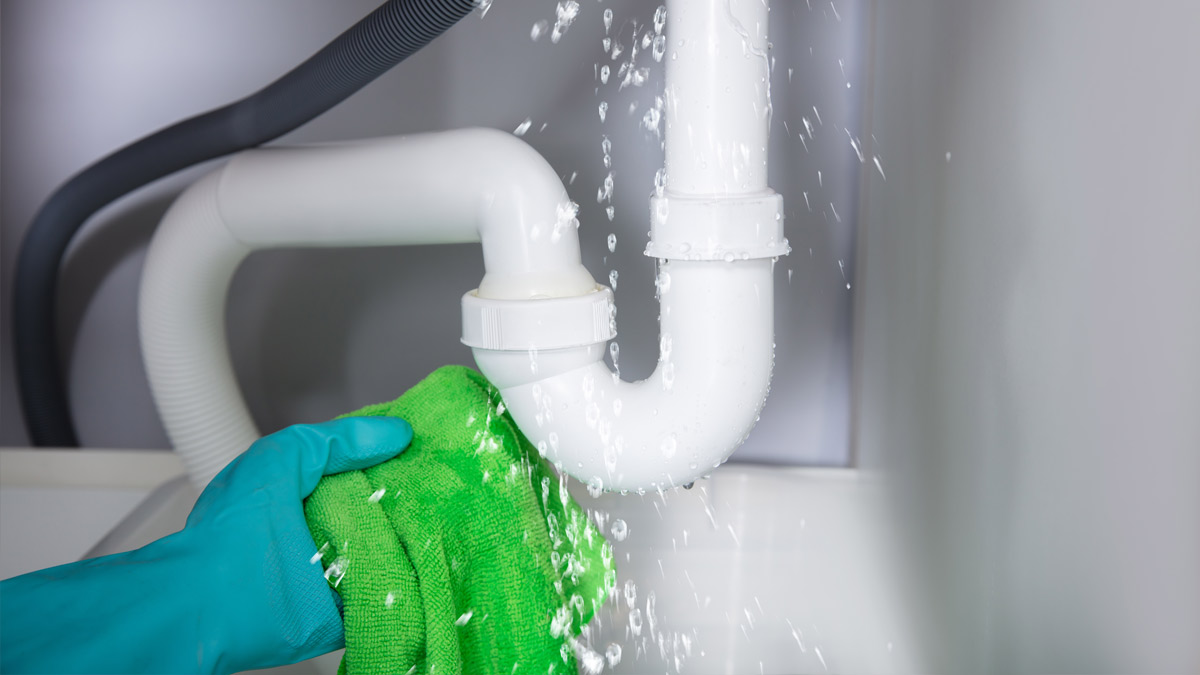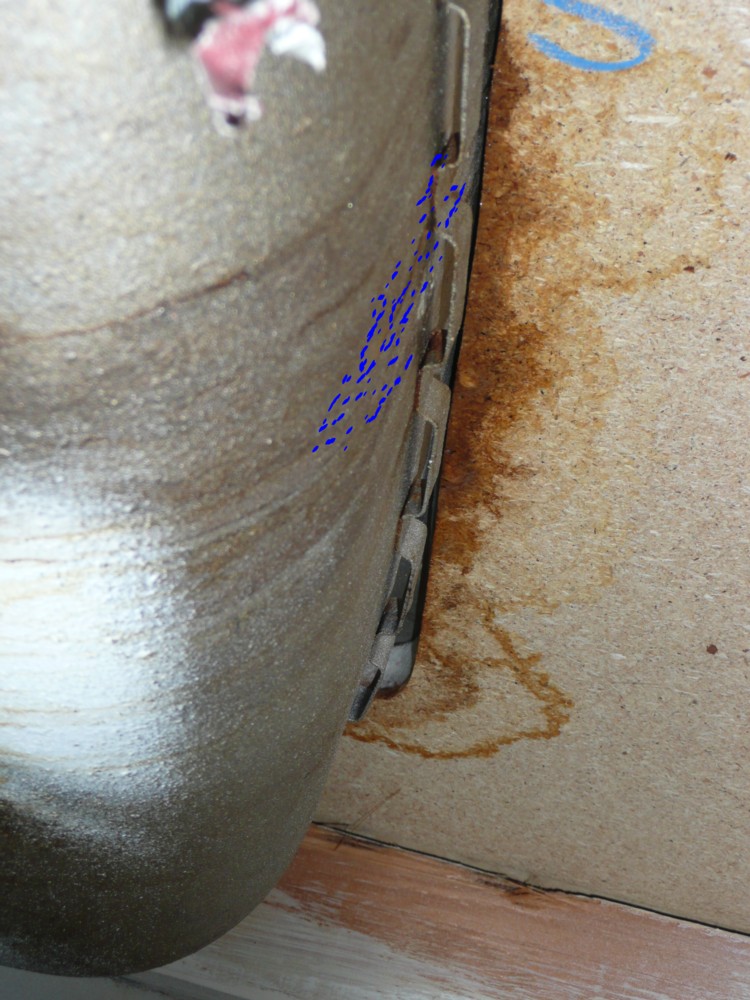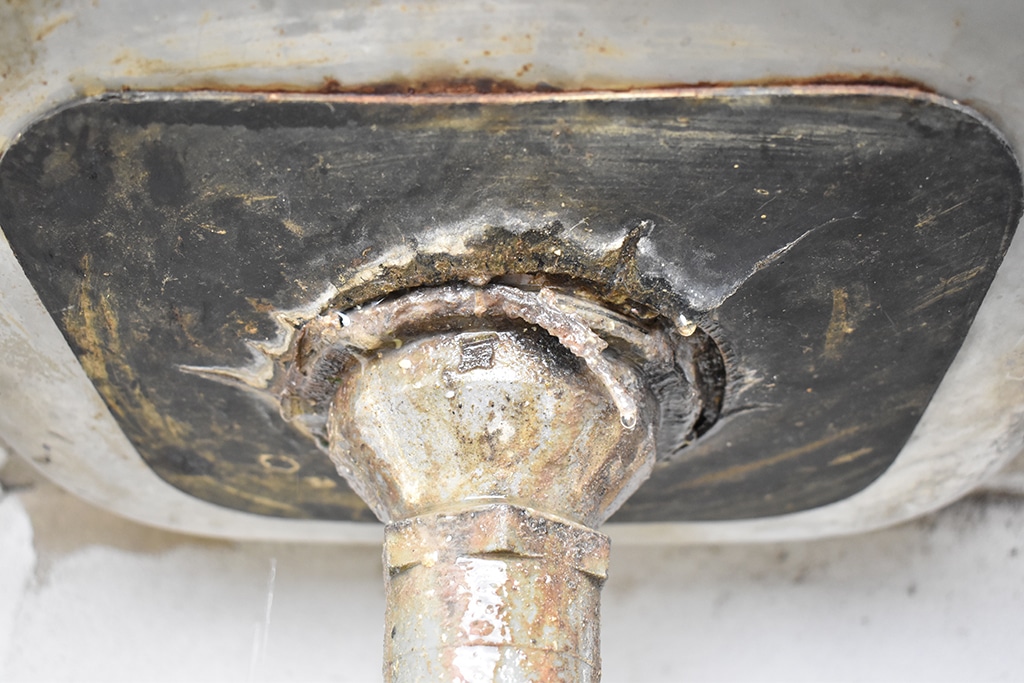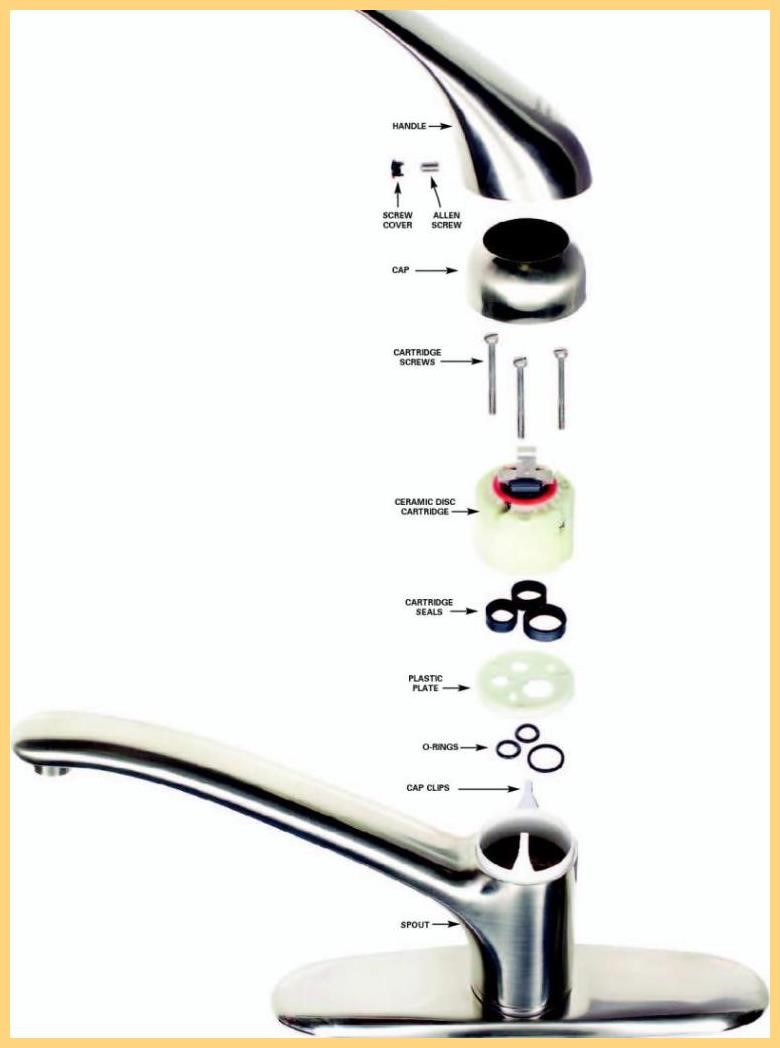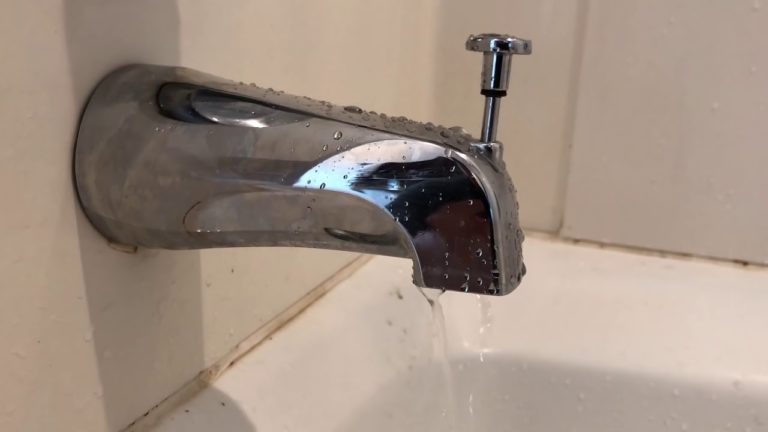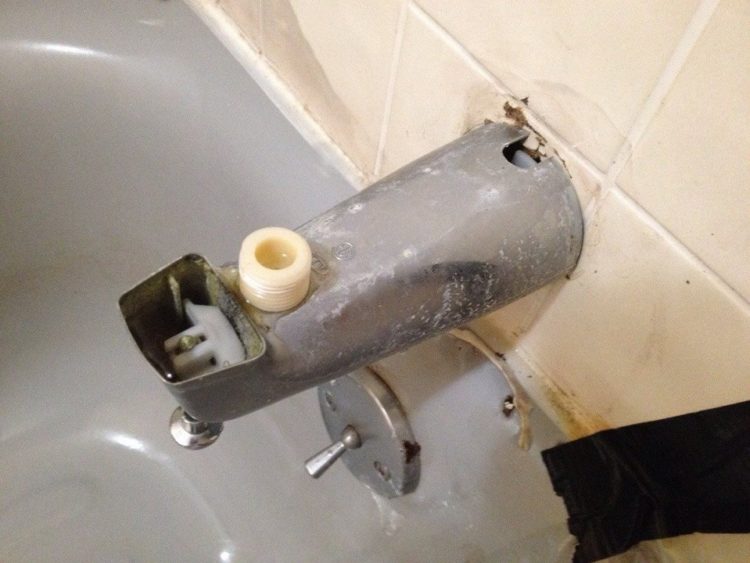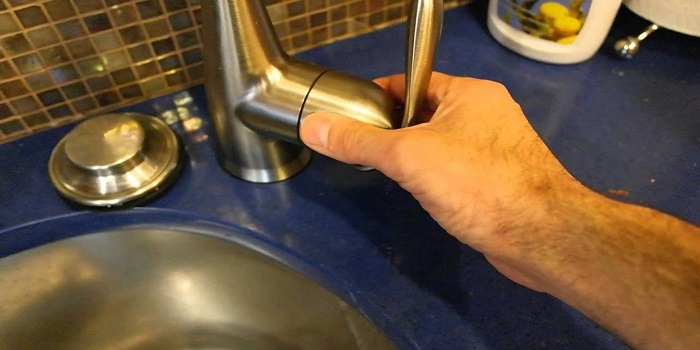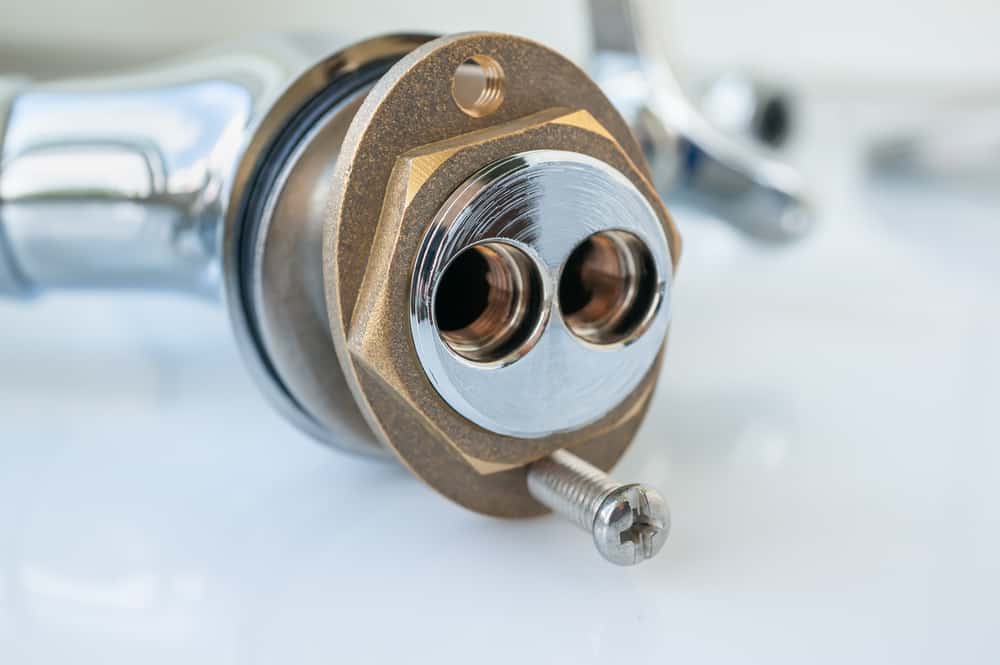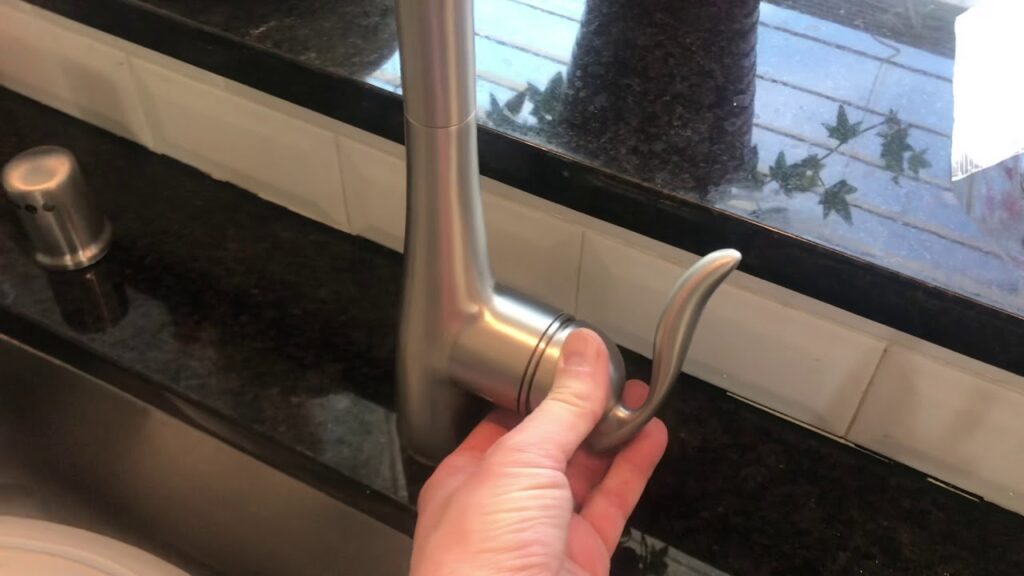If you've noticed water pooling around your kitchen sink spout or a steady drip coming from it, you likely have a leak. A leaky kitchen sink spout can be a nuisance and waste water, but it's a common issue that can be easily fixed. Here's how to tackle this problem: First, turn off the water supply to your sink. You can usually do this by turning the valve under the sink clockwise until it is fully closed. Next, use a wrench to loosen and remove the handle of the spout. This will expose the cartridge or stem, which is the part responsible for controlling the flow of water. Check for any cracks or damage and replace if necessary. Then, use a pair of pliers to remove the spout from the base. Inspect the o-ring and washer for any signs of wear and tear and replace if needed. Reassemble the spout and handle, and turn the water supply back on to test for leaks. If you're not comfortable doing this yourself, consider calling a professional plumber for assistance.1. How to Fix a Leaky Kitchen Sink Spout
A kitchen sink spout can leak for a variety of reasons. Some of the most common causes include: Damaged Parts: Over time, the o-ring, washer, cartridge, or stem of the spout can wear out or become damaged, causing leaks. Loose Connections: The connections between the spout and the base of the sink can become loose, leading to leaks. Mineral Buildup: Hard water can cause mineral buildup in the spout, which can affect the seal and cause leaks. High Water Pressure: Excessive water pressure can put strain on the spout and cause it to leak. Old Age: Like any plumbing fixture, a kitchen sink spout can wear out over time and develop leaks. Understanding the cause of the leak can help you determine the best course of action for fixing it.2. Common Causes of a Leaking Kitchen Sink Spout
If you're comfortable with DIY projects, there are a few solutions you can try to fix a leaking kitchen sink spout: Replace Damaged Parts: As mentioned earlier, damaged parts can cause leaks. If you can identify the specific part that is causing the leak, you can purchase a replacement and install it yourself. Tighten Connections: If the leak is coming from a loose connection, simply use a wrench to tighten it. Be careful not to overtighten, as this can cause damage. Clean Mineral Buildup: If hard water is causing the leak, you can try cleaning the spout with a mixture of vinegar and water to remove mineral buildup. This may help improve the seal and stop the leak. Install a Pressure Regulator: If high water pressure is the culprit, installing a pressure regulator can help reduce the strain on the spout and prevent leaks. Keep in mind that these solutions may not work for all types of leaks and it's important to know your limits. If you're unsure or uncomfortable with any DIY methods, it's best to seek professional help.3. DIY Solutions for a Leaking Kitchen Sink Spout
There are a few troubleshooting steps you can take if your kitchen sink spout is leaking: Check All Connections: Make sure all connections are tight and secure. If any are loose, tighten them with a wrench. Inspect Parts: Take a look at the o-ring, washer, cartridge, and stem for any signs of damage or wear and tear. If you notice any, replace the affected part. Test the Water Pressure: Use a pressure gauge to check the water pressure coming from your kitchen sink. If it's too high, consider installing a pressure regulator. Check for Leaks Elsewhere: Sometimes, a leak in the kitchen sink spout can be caused by a larger issue, such as a damaged pipe. If you can't find the source of the leak, it's best to call a professional for assistance.4. Troubleshooting a Leaking Kitchen Sink Spout
If your kitchen sink spout is beyond repair, you may need to replace it. Here's how: First, turn off the water supply to your sink. Next, use a wrench to loosen and remove the spout from the base. You may need to use some force to break any mineral buildup or sealant. Then, remove the old o-ring and washer and replace them with new ones. Install the new spout by screwing it into the base and tighten with a wrench. Finally, turn the water supply back on and test for leaks. If you're not comfortable with this process, it's best to leave it to a professional to ensure the replacement is done correctly.5. How to Replace a Leaking Kitchen Sink Spout
While leaks can happen, there are some steps you can take to prevent them from occurring in the first place: Regular Maintenance: Check your kitchen sink spout and its components regularly for any signs of wear and tear. This can help you catch and fix any issues before they turn into leaks. Be Gentle: Avoid using excessive force when turning the handle or pulling the spout out. This can cause damage to the parts and lead to leaks. Use a Strainer: Installing a strainer in your kitchen sink can help prevent debris from getting into the spout and causing blockages that can lead to leaks. Repair Leaks Promptly: If you do notice a leak, don't ignore it. Addressing the issue promptly can prevent further damage and save you money in the long run.6. Tips for Preventing a Kitchen Sink Spout from Leaking
It's important to be able to recognize the signs of a leaking kitchen sink spout so you can address the issue before it becomes a bigger problem. Some signs to watch out for include: Drips or Puddles: If you notice water dripping from the spout or puddles forming around it, you likely have a leak. Low Water Pressure: A leaking spout can cause a decrease in water pressure, so if you notice this, it's worth checking for a leak. Squeaky Handle: If your spout handle is squeaking or difficult to turn, this could be a sign of a leaky spout. If you notice any of these signs, it's best to investigate further and address the issue as soon as possible.7. Signs that Your Kitchen Sink Spout is Leaking
If DIY methods don't work or you're not comfortable with attempting the repairs yourself, there are professional options for fixing a leaking kitchen sink spout: Call a Plumber: A professional plumber can accurately diagnose the issue and fix it for you, saving you time and potential frustration. Warranty Coverage: If your kitchen sink spout is still under warranty, you may be able to get it repaired or replaced at no cost to you. Home Warranty: If you have a home warranty, a leaking kitchen sink spout may be covered under it. Check with your warranty provider for more information.8. Professional Repair Options for a Leaking Kitchen Sink Spout
If your kitchen sink spout is leaking from the base, the issue may be that it has become loose. Here's how to tighten it: First, turn off the water supply to your sink. Next, use a wrench to tighten the connections between the spout and the base. If the spout is still loose, you may need to add some plumber's putty or silicone sealant to create a stronger seal. Remember not to overtighten the connections. Finally, turn the water supply back on and check for leaks.9. How to Tighten a Loose Kitchen Sink Spout
To effectively fix a leaky kitchen sink spout, it's helpful to understand its anatomy: O-Ring: This small rubber ring is responsible for creating a watertight seal between the spout and the base. Washer: The washer sits between the base and the spout and helps create a seal to prevent leaks. Cartridge/Stem: These parts control the flow of water from the spout and are responsible for turning the water on and off. Base: The base is the part that attaches the spout to the sink and holds it in place. Handle: The handle is used to turn the spout on and off and control the water flow. By understanding the function of each part, you can better troubleshoot and fix any issues that may arise with your kitchen sink spout.10. Understanding the Anatomy of a Kitchen Sink Spout to Fix Leaks
Why Your Kitchen Sink Spout May Be Leaking and What You Can Do About It

The Importance of a Functional Kitchen Sink
 The kitchen sink is one of the most important fixtures in any house. It is used for a variety of tasks such as washing dishes, cleaning fruits and vegetables, and even filling up pots for cooking. So, when your kitchen sink starts leaking from the spout, it can quickly become a major inconvenience. Not only is it wasteful and messy, but it can also lead to further damage and potentially costly repairs if left unaddressed.
The kitchen sink is one of the most important fixtures in any house. It is used for a variety of tasks such as washing dishes, cleaning fruits and vegetables, and even filling up pots for cooking. So, when your kitchen sink starts leaking from the spout, it can quickly become a major inconvenience. Not only is it wasteful and messy, but it can also lead to further damage and potentially costly repairs if left unaddressed.
Common Causes of a Leaking Spout
 There can be several reasons why your kitchen sink spout is leaking. The most common cause is a worn-out or faulty O-ring, which is a small rubber ring that helps create a watertight seal. Over time, these O-rings can become worn or cracked, causing water to leak from the spout. Another common culprit is a loose or damaged valve or cartridge, which is responsible for controlling the flow of water. If these parts are not functioning properly, it can also result in a leaking spout.
There can be several reasons why your kitchen sink spout is leaking. The most common cause is a worn-out or faulty O-ring, which is a small rubber ring that helps create a watertight seal. Over time, these O-rings can become worn or cracked, causing water to leak from the spout. Another common culprit is a loose or damaged valve or cartridge, which is responsible for controlling the flow of water. If these parts are not functioning properly, it can also result in a leaking spout.
How to Fix the Problem
 If you're experiencing a leaking kitchen sink spout, there are a few steps you can take to fix the problem. First, turn off the water supply to your sink and make sure to dry off any excess water. Then, check the O-ring and the valve or cartridge for any signs of wear or damage. If they need to be replaced, you can easily find these parts at your local hardware store. Be sure to follow the manufacturer's instructions for installation. If the problem persists, it may be best to call a professional plumber to properly diagnose and fix the issue.
If you're experiencing a leaking kitchen sink spout, there are a few steps you can take to fix the problem. First, turn off the water supply to your sink and make sure to dry off any excess water. Then, check the O-ring and the valve or cartridge for any signs of wear or damage. If they need to be replaced, you can easily find these parts at your local hardware store. Be sure to follow the manufacturer's instructions for installation. If the problem persists, it may be best to call a professional plumber to properly diagnose and fix the issue.
Preventative Measures for Future Leaks
 To avoid future leaks from your kitchen sink spout, it's important to properly maintain and care for your sink. Regularly check for any signs of wear or damage and address them promptly. Also, be mindful of what you put down your sink drain. Avoid pouring grease or large chunks of food down the drain, as these can cause clogs and put strain on the spout and other parts. Lastly, consider investing in a high-quality, durable sink that will last you for years to come.
In conclusion, a leaking kitchen sink spout can be a frustrating and inconvenient problem to deal with. However, by understanding the common causes and taking preventative measures, you can keep your sink functioning properly and avoid costly repairs. If you're unsure of how to fix the issue or want to ensure a proper and long-lasting solution, don't hesitate to seek professional help. A functional and leak-free kitchen sink is essential for a well-designed and efficient kitchen.
To avoid future leaks from your kitchen sink spout, it's important to properly maintain and care for your sink. Regularly check for any signs of wear or damage and address them promptly. Also, be mindful of what you put down your sink drain. Avoid pouring grease or large chunks of food down the drain, as these can cause clogs and put strain on the spout and other parts. Lastly, consider investing in a high-quality, durable sink that will last you for years to come.
In conclusion, a leaking kitchen sink spout can be a frustrating and inconvenient problem to deal with. However, by understanding the common causes and taking preventative measures, you can keep your sink functioning properly and avoid costly repairs. If you're unsure of how to fix the issue or want to ensure a proper and long-lasting solution, don't hesitate to seek professional help. A functional and leak-free kitchen sink is essential for a well-designed and efficient kitchen.











